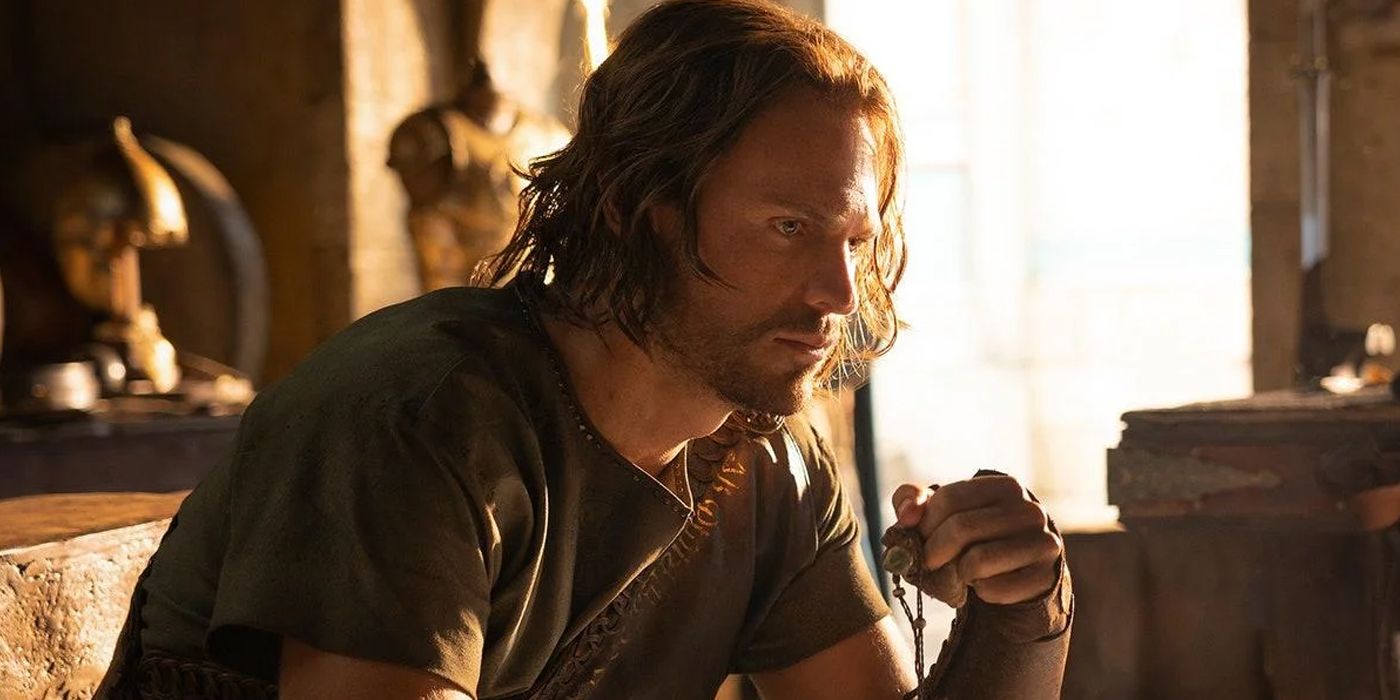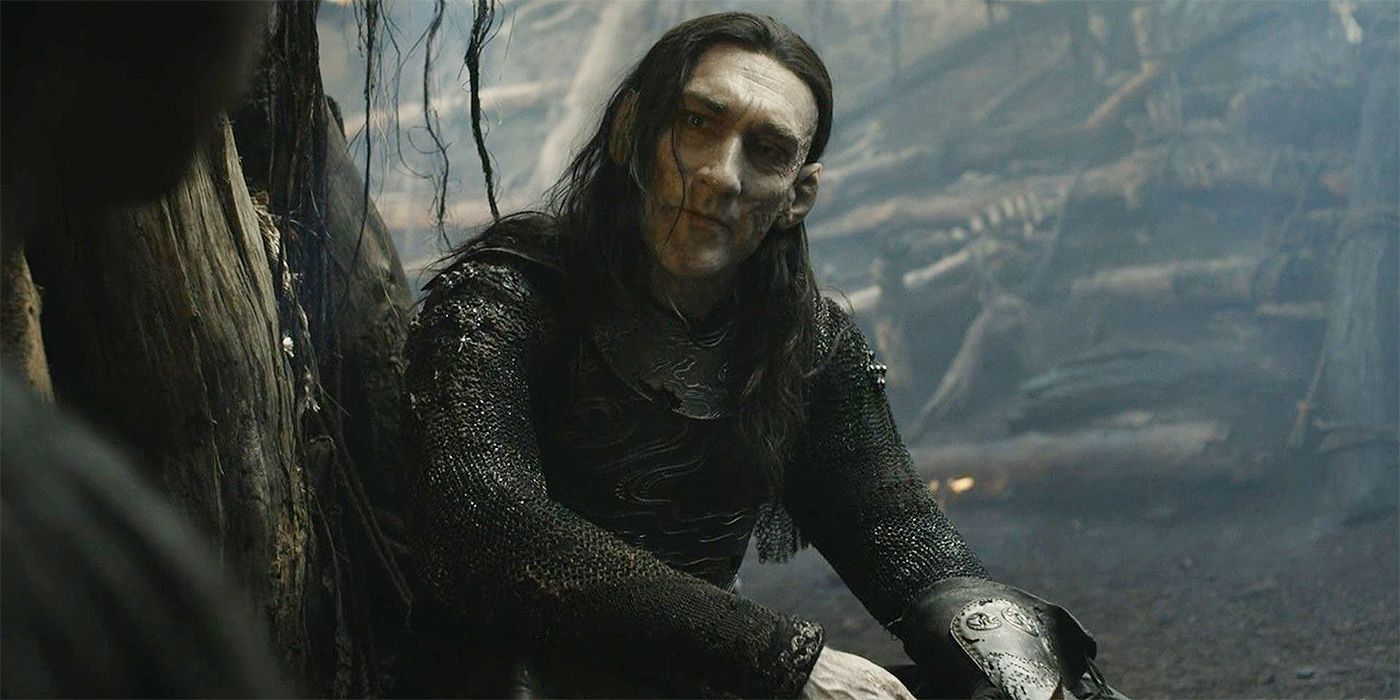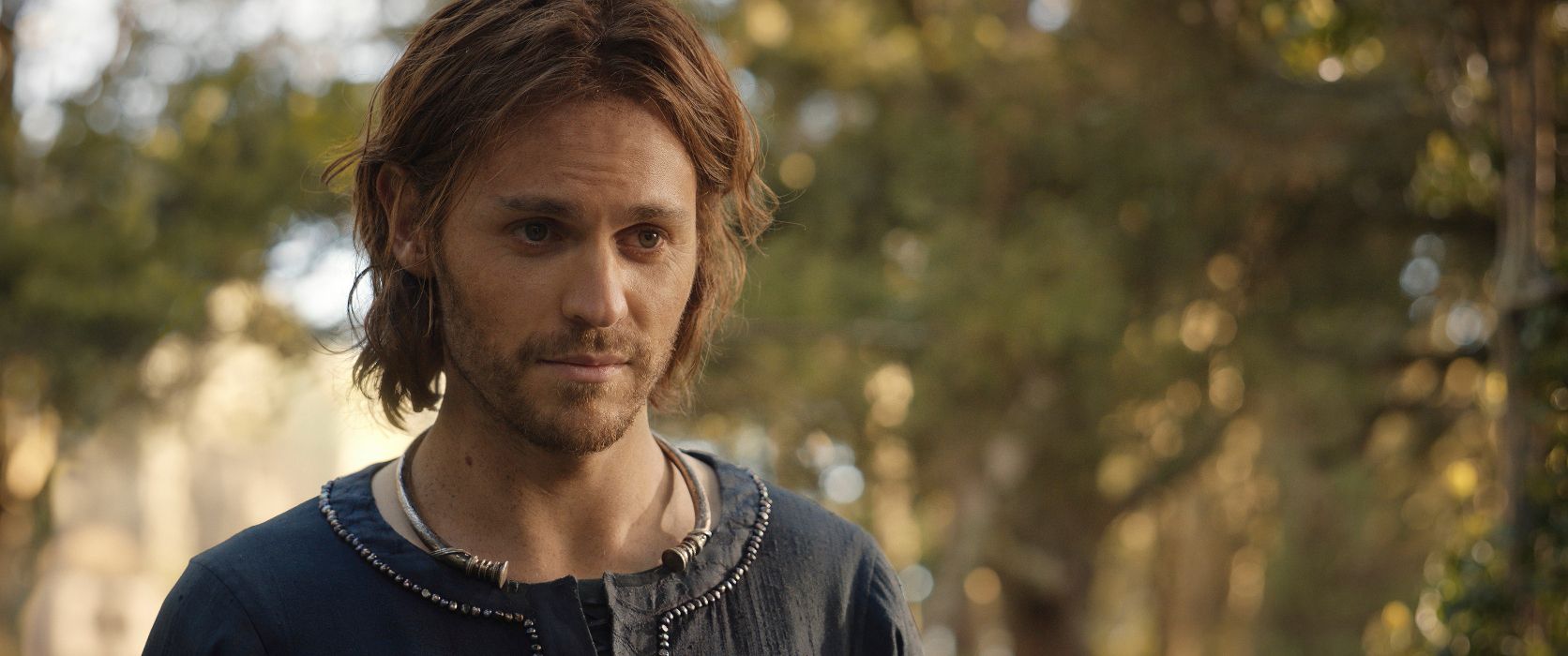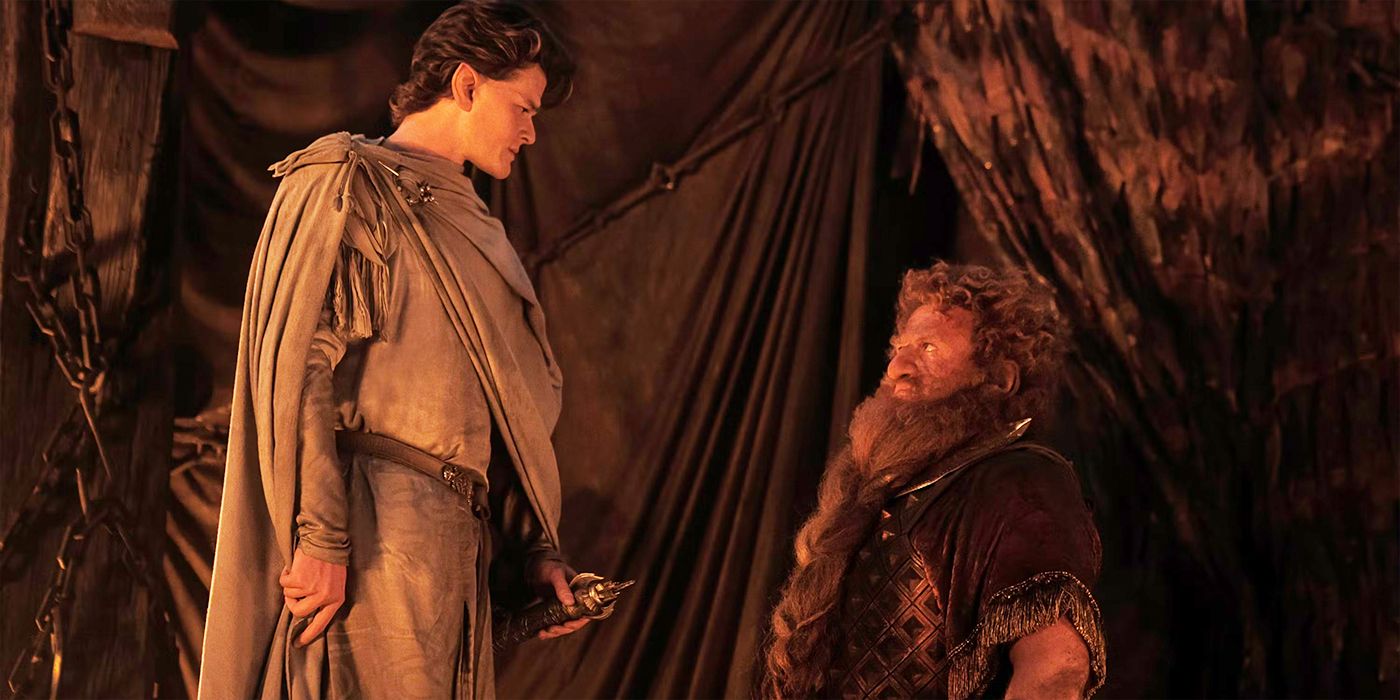While Middle-earth and the world of The Lord of the Rings are derived from J.R.R. Tolkien’s imagination, there are comparisons that can be drawn to Arthurian mythology, fairy tales, and world history. Tolkien’s story of Men, Dwarves, and Elves setting aside their differences in order to confront the ultimate source of evil was heavily inspired by his personal experiences in World War II. Amazon Prime’s smash hit prequel series The Lord of the Rings: The Rings of Power offers many new insights on the Tolkien universe, but one of its most interesting concepts is putting a human face on evil.
It’s more than just good versus evil in The Rings of Power. Although the series takes place an entire age before the events of The Lord of the Rings trilogy, there has been a lurking force of darkness in Middle-earth for quite some time. The dark lord Morgoth (who is essentially Tolkien’s version of Satan) reshaped Middle-earth, drawing human forces to his wicked cause. However, both Morgoth and his lieutenant Sauron were taking advantage of the existing xenophobia, discrimination, and civil unrest that plagued the realms of men.
The Rings of Power offers a more three-dimensional look at Middle-earth’s mythical creatures. While some of the heroes rise to the challenge, we see that there is fear among the leaders of men, Dwarves, and Elves that causes them to do terrible things. Unlike Jackson’s films, The Rings of Power even takes the time to make villains like Adar (Joseph Mawle) empathetic. This allows The Rings of Power to address modern issues, and it makes the war against evil a little bit more complicated.
Adar and The Orcs
While Tolkien’s writing has been unclear about the origins of the Orcs, these fearsome creatures have never been depicted as anything but flesh-eating monsters. The Rings of Power changes up this formula by explaining how the Elf warrior Adar was corrupted by Morgoth during the Year of Trees. Adar’s situation is relatable; the Elves had little knowledge about the dark arts at the time, and Morgoth preyed on their desire to create life. Given how pretentious the Elven High Council is in The Rings of Power, it’s understandable why someone like Adar would want to rebel.
However, Adar later explains to Galadriel (Morfydd Clark) that he soon found himself in conflict with Sauron. Adar may have wanted to subdue other forms of life, but he didn’t approve of Sauron’s brutality toward the Orcs. “Adar” is derived from the Sindarin word for “father,” and Adar truly sees himself as a paternal figure to “his children.” Adar gives each of his warriors a name, and it’s revealed that he intends for the Southlands to serve as their new home.
This paints the central conflict itself under a different perspective. Adar isn’t a primal force of evil, and genuinely believes that his conquest is justified. He’s certainly ruthless, but he knows that the Elves that guard the Southlands would never allow the Orcs to survive in peace. It’s interesting to see a Middle-earth story where not all of the villains are aligned.
Halbrand and Sauron
One of the biggest mysteries that The Rings of Power fans paid attention to each week was the identity of Sauron. Tolkien’s mythology states that the dark lord employed many disguises during the Second Age, so it was possible that one of the lead characters in the series could be harboring a dark secret. While Adar, Waldreg (Geoff Morrell), and Theo (Tyroe Muhafidin) all seemed like possibilities, it’s revealed in the season finale “Alloyed” that Halbrand (Charlie Vickers) has been deceiving Galadriel all along.
In both Jackson’s films and the original Ralph Bashki animated adaptation, Sauron is depicted as a towering warrior and an evil spirit. It was unique to see a manipulative, strategic character that convinces Galadriel that his intentions are sincere. The romantic attraction between the two makes the twist even crueler. It may explain why Cate Blanchette’s version of the character always seems so heartbroken.
Halbrand has the political knowledge of a modern-day dictator. He manages to put the characters against each other and nearly pins the entire uprising on Adar. By fashioning himself as a hero, Halbrand is able to convince the regent Queen Miriel (Cynthia Addai-Robinson) that he should be named King of the Southlands without appearing to be ambitious for the position. He’s fashioned as a contorted version of Aragon (Viggo Mortensen), which challenges the concept of villainy.
Rings of Power Civil Unrest and Discrimination
Outside of the primary villains, we see a moral grayness to the way that The Rings of Power depicts the political infrastructure of Middle-earth. While the Elven High King Gil-galad (Benjamin Walker) has genuine concerns about the rise of evil, he’s unafraid to sacrifice their allies to complete his mission. Unlike Elrond (Robert Aramayo), Gil-galad is callous when discussing the Dwarves. He shows no loyalty to them and isn’t above deception.
We see a similarly unsympathetic attitude from the Dwarven lords when Elrond and Durin IV (Owain Arthur) confront King Durin III (Peter Mullan). It’s clear that tensions between the species are long running. Durin III has no interest in helping the Elves, and is infuriated at his son’s compassion; he declares that the Age of Elves is over, and banishes Elrond. However, the Rings of Power maintain the hope that Durin IV and Elronds’ friendship will help heal the societal tensions.
There is a similar element of discrimination in the events of Numenor. Many of the citizens hold on to generational hatred for the Elves, and the deceptive advisor Pharazon (Trystan Gravelle) manages to radicalize riots of citizens against Galadriel’s quest. It’s critical that Pharazon only agrees to support Elendil’s (Lloyd Owen) quest to the Southlands after he becomes convinced that they will be able to conquer the Elves. The desire for power is what allows Sauron to gain allies, and we know that Numenor is bound to a tragic fate.
The Rings of Power has offered surprises for Tolkien fans that make the story even more rich. While there’s a plethora of source material to draw from, it’s also nice to see new additions that challenge our conception of Middle-earth. Making the show’s version of evil one that was recognizable was an ambitious creative choice that paid off. Some prequels offer nothing but unneeded revelations, but The Rings of Power actually casts the original films in a new light.




